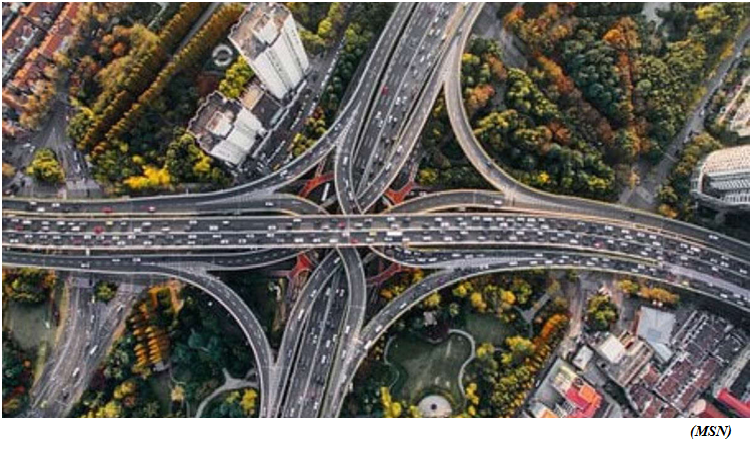A nine shot booster to the infra sector (GS Paper 3, Economy)

Context:
- Finance Minister listed seven key priorities of the Union Budget 2023 under the ‘Saptrishi’ mantras. One of these priorities is Infrastructure and Investment.
- Investments have a powerful multiplier effect. They improve mobility, facilitate trade, lead to job creation, and boost overall economic productivity.
The FY24 Budget provides a nine-shot booster dose to the infrastructure sector:
Enhanced capital expenditure:
- The Budget lays out a 33% increase in outlay for the infrastructure sector at Rs 10 trillion (3.3% of the GDP), atop a 35% increase last year.
- The government has been consistent over the years in emphasising enhanced public work as the key route to prime the economy.
- It was highlighted that the direct capital investment by the Centre is complemented by the provision made for creation of capital assets through grants-in-aid to states. Thus, the effective capital expenditure of the Centre is budgeted at Rs 13.7 trillion (4.5% of GDP).
Railways:
- The finance minister specifically pointed out that the Rs 2.4 trillion outlay is nine times the allocation of 2013-14.
- This emphasis is logical for three reasons; the focus on de-carbonisation (with 100% rail tracks to be completely electrified); greater expected freight movementand the new breed of passenger trains.
- It is the first Budget speech in two decades where there is no mention of roads. In many ways, this demonstrates the maturing of the road development initiative after almost a quarter-century.
Urban infrastructure:
- The spotlights have also been shifted to focus on urban infrastructure and its financing.
- A Rs 10,000 crore per annum contribution to a newly set-up Urban Infra Development Fund has been proposed to help the municipal authorities of Tier 2 and 3 cities shore up urban planning and governance so they are ready to issue municipal bonds at the earliest.
- This has been a long-standing demand of urban economists, bolstered recently by two reports from the World Bank and the RBI, flagging the poor state of urban finances.
Green Energy:
- The green energy has been given due weightage. With the National Green Hydrogen Mission getting an outlay of Rs 19,700 crore, this Budget also sets aside Rs 35,000 crore to “priority fund” green-energy transition.
- A viability-gap scheme has been proposed for encouraging fresh initiatives in battery storage systems and pump storage.
- A significant investment of Rs 20,700 crore has been targeted for the generation and evacuation of solar power from Ladakh.
Social objective:
- The substantial 66% increase in allocation for the Awas Yojana (Rs 79,000 crore) is in order as a desirable social objective to accomplish having a roof over every Indian’s head.
Air Connectivity:
- Air travel is not a luxury now and the Budget has sought to deepen the penetration of air connectivity.
- This rejuvenation of 50 airports, heliports, water aerodromes, and advance landing grounds will be a good carry-forward of an ongoing objective.
Capital expenditure by states:
- To tackle the slowdown of capital expenditure by states in the first nine months of this fiscal head-on, Rs 1.3 trillion has been set aside as 50 year interest-free loans, but rightfully has some caveats on where it should be spent. This facility has to be used up in FY24.
Power sector reforms:
- An interesting twist has been engineered to push power sector reforms (read discom reform).
- While states have broadly been allowed a 3.5% fiscal deficit on state GDP, it is now mandated that 0.5% of this has to be used exclusively for this.
Logistics:
- Logistics, connectivity, and multi-modalism have seen some pathbreaking platforms like GatiShakti and the National Logistics Plan.
- Keeping with this, Rs 75,000 crore has been earmarked for 100 transport connectivity projects.
Way Forward:
- These boosters adhere to stated infra policy goals of the nation; however, leveraging capital for the social infra sector could be emphasised. Budgetary outlays will be insufficient to address the needs of health and education.
- It was expected that the recently set-up Infrastructure Finance Secretariat (IFS) would to construct PPP schemes where Rs 1 of government expenditure could be complemented by Rs 5 of private contributions, but maybe one can wait for this in 2024.


